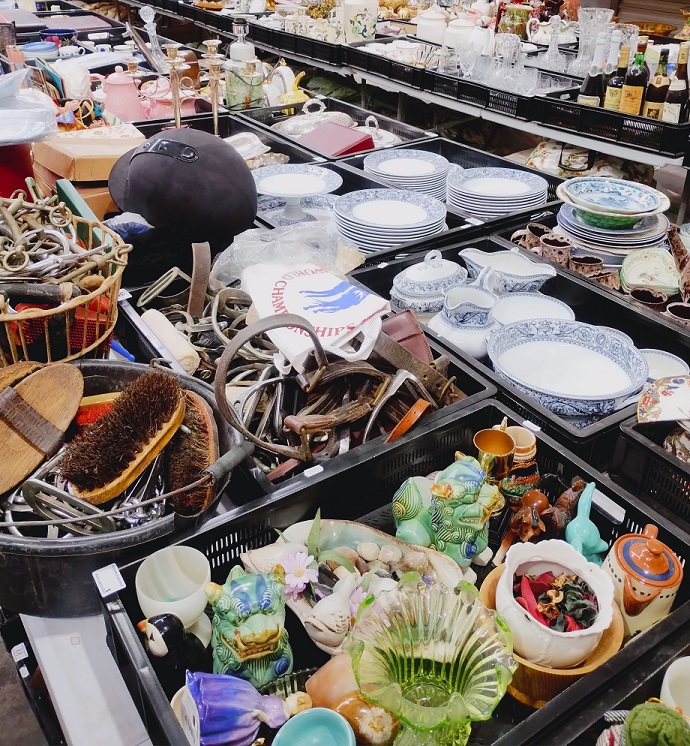Everyone in the antiques world dreams of finding The Big One. Unearthing something that ends up being worth many times what you paid for it. Although it undoubtedly helps, I don’t think the appeal is just about the money. The thrill is about knowing you found it, you spotted its worth when no one else had.
Of course, the finding of a really valuable item is a very rare, even newsworthy, occurrence and for most of us a dream is all it will ever be. The best example I’ve seen was on the BBC television programme, Antiques Roadtrip. Militaria expert Paul Laidlaw achieved the highest amount ever made on a single item. He found what he recognised as a very small camera and film developing kit. He didn’t know what it was worth but he knew it was unusual and therefore potentially interesting to collectors. Paul paid £60 for it, it sold for £20,000. Would I have picked it out? Of course not, but I’m in good company because neither had the shop owner, the person who sold it to the shop nor indeed any of the other shoppers who had passed it by.
Back in the real world…
Therein lies the reality. Few people have the skills and knowledge to recognise things that might make really significant amounts of money, but don’t despair! With time and patience there are genuine bargains to be had and profits to be made. You don’t have to be an expert, but you do have to look through an awful lot of stuff that isn’t worth much. There are lots of us doing it, it’s the basis for much of the antiques business.

A good place to start are auctions that sell mixed lots. Generally, the lots are presented in open crates, containing (sometimes) loosely related items. If you’re new to auctions have a read of my guide to viewing at auctions. Most times, but not always, that you find something you reckon is worth a bit more than the average, someone else will have seen it too and come bidding time a low, pre-sale estimate becomes meaningless.
However just once in a while things do go unnoticed. This is commonest when the bulk of people viewing the auction are doing so online. The auction house photographer might have picked out what they think is the most valuable items to photograph and post online, but sometimes they get it wrong. In big auctions there can be dozens of crates to photograph and there just isn’t time to consider the contents too much. Then it’s down to the locals to use their experience to gain an edge. Most auctions offer one or two days of viewing, but there aren’t always many people with the time, patience and experience to go through every crate so inevitably things are missed.
A small success
We struck lucky recently at a local auction. The crate in question contained a very eclectic mix of vaguely equestrian related items including a couple of hip flasks, some engraved glass riding trophies, a nicely boxed Chinese abacus (I did say it was only vaguely equestrian), a pair of Staffordshire Flatbacks of horses, and two stylised, ceramic Zebras.
I have to say it was the abacus that caught my attention as it looked like the box was well made. A bit of research suggests it’s probably worth about £30. The glass trophies were of no value that I could see and as one had a small chip in the rim, they made their way to the glass recycling bin. I’d love to say I appreciate the Staffordshire Flatbacks, but I can’t. They will get sold on if possible, probably not for very much. I understand there isn’t much of a market for them today; it doesn’t surprise me!

The star turn though are undoubtedly the ceramic zebras. Taken out of the crate and set up for viewing they look great. They are stylish, elegant and really rather lovely. Thankfully they’re undamaged from their travels and rather careless packaging for auction. A quick search of the internet identified them as having been designed by Swedish designer Lillemor Mannerheim-Klingspor for Arabia Finland as part of a series of designs for the World Wide Fund for Nature (WWF) in 1984. The pair should sell for about £200 in the UK, about four times the cost of the lot. If we can sell the other items then the zebras come for free, which is excellent news as they have settled in nicely in their new home and are probably not going anywhere soon.
It would be great to say I instantly recognised the zebras as being of value but in truth I didn’t. I just liked them and that’s always a really good start. If something appeals to you, then someone else will probably like it too. In this case there were a couple of other pointers that helped. Firstly, as I mentioned, the condition of the zebras appears to be perfect. Any chips, scratches or cracks would have reduced their value by at least half, probably more. Secondly, they are both clearly and distinctly signed. This means they were probably hand made or hand finished by someone proud enough to sign them. Crucially for valuing, a signature or some other discernable marks gives you something to start an internet search. In this case, I’m slightly amazed that no one else had done the same but I’m very glad they hadn’t!